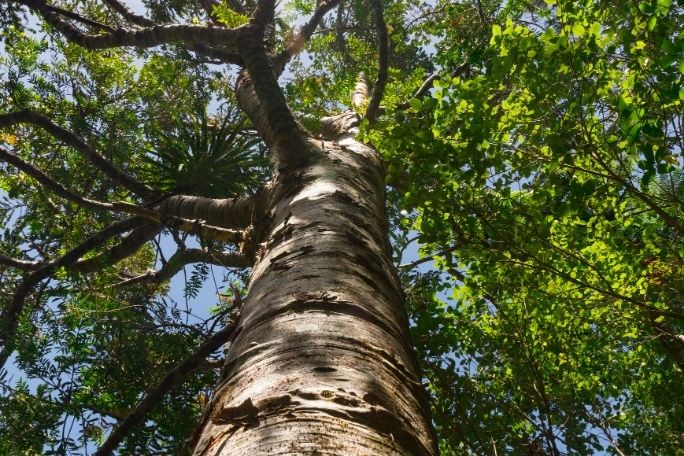Lesson summary
Students are instructed in how to view trees as a guide to story structures and how to use trees and wildlife as characters in stories from their local environment to celebrate Schools Tree Day. They use trees as both metaphor and subject for crafting a narrative, using their creativity and their connections to native wildlife.
Learning intentions:
Students will...
- describe and explain qualities about local trees and wildlife
- plan, create, edit and publish a story about a tree in the local environment.
Success criteria:
Students can...
- use trees as inspiration and as a structure for developing a narrative.
- craft descriptions of trees based on observation of their qualities and relationship to their environment.
- work independently or in-pairs to write, draw and reflect.
Lesson guides and printables
Lesson details
Curriculum mapping
Australian Curriculum content descriptions:
Year 4:
Year 5:
Year 6:
NSW Syllabus outcomes: EN2-2A, EN3-2A, GE2-1, GE2-2, GE3-1, GE3-2
General Capabilities: Critical and Creative Thinking, Literacy
Cross-curriculum Priority: Sustainability – Systems (SS1)
This lesson is part of the wider unit of work Schools Tree Day – Primary
Time required: 120 minutes.
Level of teacher scaffolding: High – Facilitate explicit teaching and guide students through independent observations and writing. Some students may require additional literacy support.
Resources required
- Pens and paper per student
- Devices for taking photos – OPTIONAL
- Student Worksheet – as needed per student
Skills
This lesson is designed to build students’ competencies in the following skills:
- Communication
- Creativity
- Critical thinking
Additional info
Following this lesson is an ideal way for students to participate in Planet Ark’s Schools Tree Day – the largest nature-care event in Australian schools. You and your students will join thousands of amazing teachers in making a difference, fostering a child’s love of nature and creating positive environmental change. So, get growing! It only takes a minute to register for Schools Tree Day.


Welcome back!
Don't have an account yet?
Log in with:
By signing up to Cool.org you consent and agree to Cool's privacy policy to
store, manage and process your personal information. To read more, please see
our privacy policy here(Opens in new tab).
Create your free Cool.org account.
Many of our resources are free, with an option to upgrade to Cool+ for premium content.
Already have an account?
Sign up with:
By signing up to Cool.org you consent and agree to Cool's privacy policy to
store, manage and process your personal information. To read more, please see
our privacy policy here(Opens in new tab).